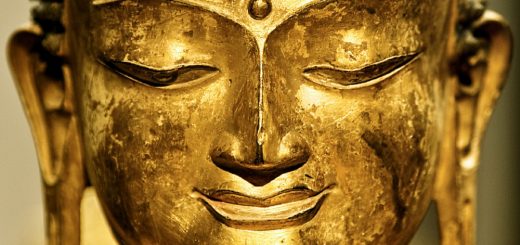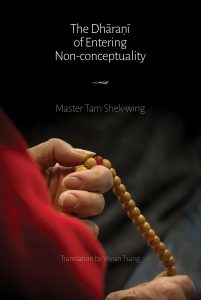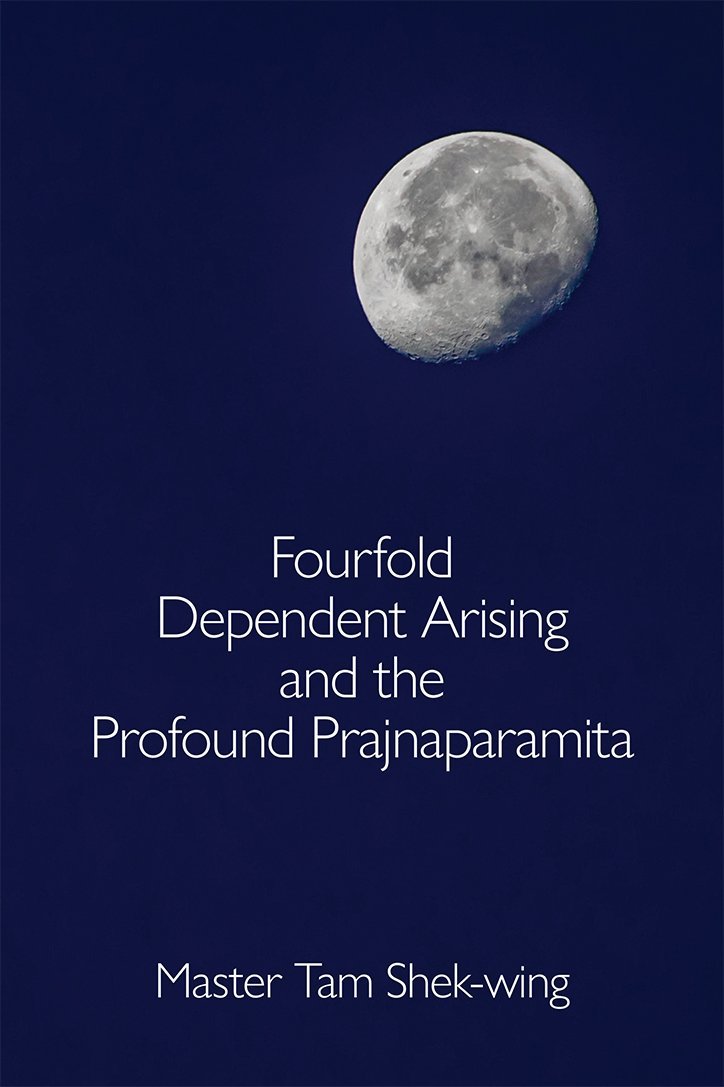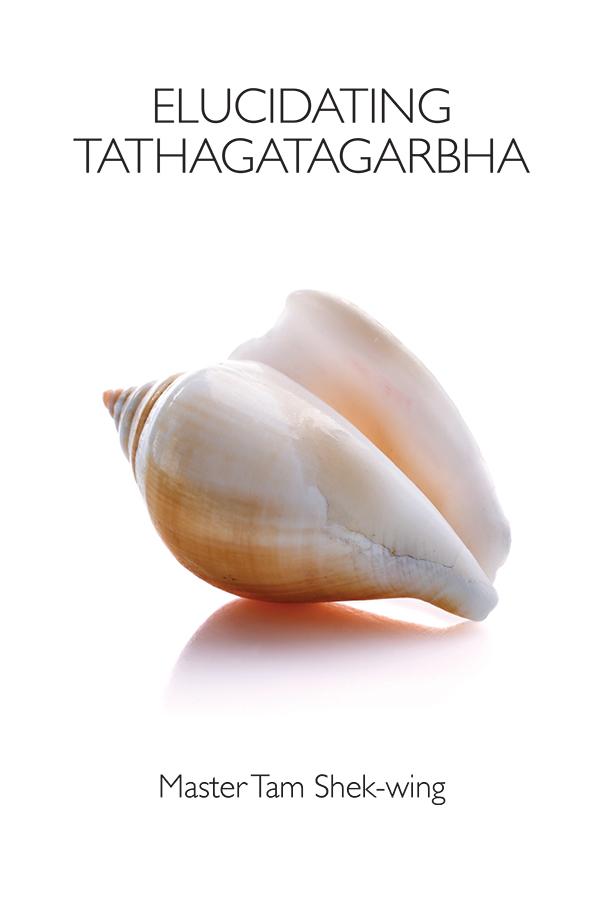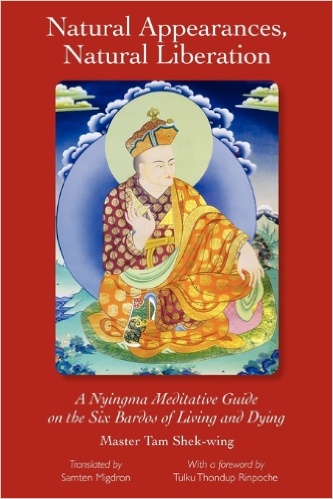Perfect Enlightenment 13: On Surpassing Illusion
Show scripture (Chinese). 「善男子!覺成就故,當知菩薩不與法縛,不求法脫,不厭生死,不愛涅槃,不敬持戒,不憎毀禁,不重久習,不輕初學。何以故?一切覺故,譬如眼光曉了前境,其光圓滿得無憎愛,何以故?光體無二無憎愛故。 「善男子!此菩薩及末世眾生,修習此心得成就者,於此無修亦無成就。圓覺普照寂滅無二,於中百千萬億不可說阿僧祇恒河沙諸佛世界,猶如空花亂起、亂滅,不即、不離,無縛、無脫;始知眾生本來成佛,生死、涅槃猶如昨夢。善男子!如昨夢故,當知生死及與涅槃無起、無滅、無來、無去,其所證者無得、無失、無取、無捨,其能證者無作、無止、無任、無滅,於此證中無能、無所,畢竟無證亦無證者,一切法性平等不壞。善男子!彼諸菩薩如是修行,如是漸次,如是思惟,如是住持,如是方便,如是開悟,求如是法,亦不迷悶。」 Show scripture (English). “Good sons, since their enlightenment is fully perfected, you should know that bodhisattvas are not attached to the dharma, and do not seek liberation from the dharma. They do not hate saṃsāra and do not love nirvāṇa. They do not venerate one for keeping the precepts, nor despise the person who breaks them. They are not in awe of the adept practitioner and do not look down on the beginner. Why? Because they are all enlightened. It is like vision seeing an object. The vision completely pervades without experiencing like or dislike. Why? Vision, in essence has no duality, therefore there is neither like nor dislike.” “Good sons, these bodhisattvas and sentient beings of the degenerate age who cultivate this mind and are able to fully consummate it, have neither cultivation nor consummation. Their Perfect Enlightenment illuminates everywhere, and is perfectly tranquil, without duality. Here, Buddha-worlds a quintillion times as many as the incalculable amount of grains of sand in the Ganges river haphazardly arise and cease like flowers in the sky. There is neither sameness nor difference, neither bondage nor freedom. Now you know for the first time that all sentient beings are originally perfect buddhas; that saṃsāra and nirvāṇa are like last night’s dream.” “Good sons, since they are like last night’s dream, you should know that saṃsāra and nirvana have neither arising nor ceasing, neither coming nor going. In the actualization of this there is neither gain nor loss, neither grasping nor releasing. In the one who realizes, there is no effort, no stopping, without letting things be, nor annihilation. In this actualization there is neither subject nor object, and ultimately neither actualization nor actualized one. The nature of all dharmas is equal and indestructible.” “Good sons, these bodhisattvas use this kind practice, gradually advance like this, think in this way, abide in this way, and awaken others using these kinds of expedient means. If you seek this kind of dharma, you will not again be vexed.” From the earlier observation, a bodhisattva accomplishes the perfect enlightenment, attains its fruition. A bodhisattva’s attainment is no different from a buddha’s attainment, which is an attainment of complete awareness. The complete awareness is where the nature of awareness permeates all phenomena without conflict nor confusion. All phenomena coalesce into the nature of awareness without confusion, the nature of awareness coalesces with all phenomena without defilement. This way, a bodhisattva is no longer trapped by phenomena, and therefore no longer seeks to become liberated. One might ask, how is a bodhisattva’s accomplishment of perfect enlightenment the same as a buddha’s. Because perfect enlightenment is of one nature, it does not change because the person has changed. Therefore, the realization of a bodhisattva is the same as the realization of a buddha. Here, we can make an analogy. The sunlight we see in the open field, compared to the ray of sunlight through a pinhole into a dark room, both are sunlight, for all sunlight are the same with no differences. One cannot say that only the former is sunlight and the latter is not. The only difference between the two is how widespread the light is. Since the nature of awareness for a bodhisattva is the same as a buddha’s, then its virtue is also the same, where one does not “seek liberation from the dharma. They do not hate saṃsāra and do not love nirvāṇa,” and so on. The scripture continues with the equality of awareness... click to show more. The scripture continues with the equality of awareness. Because the awareness is complete and perfect, it is equal to a buddha’s enlightenment that pervades the entire dharmadhātu. Consider vision as an analogy. “It is like vision seeing an object,” what is in sight in front is naturally all equal. For example, it wouldn’t be the case that only the flowers are seen but not the leaves; it wouldn’t be the case that only people are seen but not the roads. Hence the scripture says, “Vision, in essence has no duality, therefore there is neither like nor dislike.” Because the nature of awareness is equality, coalescing with all phenomena, mind-consciousness can become aware of with this awareness. A bodhisattva observes one’s mind, attaining quiescence. The realm of quiescence is also equal and of one taste, and is said to have “neither cultivation nor consummation.” (Because there is not a true practicable practice, nor is there a fruition truly realizable. It is, then, a practice without effort, a realization without contrivance.) This realm of wisdom realization (which is also a realm of consciousness) is said to “illuminate everywhere, and is perfectly tranquil, without duality.” With the illumination of dharmadhātu... click to show more. The scripture continues. “Illuminates everywhere” is the illumination of the entire dharmadhātu, “buddha-worlds a quintillion times as many as the incalculable amount of grains of sand in the Ganges river.” Here, buddha-worlds include dharmadhātu of dharmakaya buddha, the land of saṃbhogakāya buddha, and the land of nirmāṇakāya buddha, which means that the vast expanse encompasses dharmadhātu and all worlds within it. That said, all buddha-worlds are also like sky-flowers, lands of form bodies are also with arising and annihilation, “neither sameness nor difference, neither bondage nor freedom.” In such a realm of pervading illumination of perfect awareness, “Now you know for the first time that all sentient beings are originally perfect buddhas; that saṃsāra and nirvāṇa are like last night’s dream.” Sentient beings as “originally perfect buddhas” is the teaching of the Buddha-Within, but was never spelled out in the Tathāgātagarbha series of scriptures. However, it is also said that the nature of mind is buddha-nature, which is already saying that all sentient beings are originally perfect buddhas. In the Nyingma tradition, the Great Perfection practice considers the nature of great equality as the foundational view, this view also says sentient beings are originally perfect buddhas, that the storehouse consciousness is originally the Buddha-Within. Hence it is also called the “Buddha-Within storehouse consciousness” (如來藏藏識). With the illumination of the realm of consciousness... click to show more. The scripture continues. The realm of consciousness is illustrated according to the perfect awareness of mind-consciousness (Buddha-Within storehouse consciousness). In this realm, “saṃsāra and nirvana have neither arising nor ceasing, neither coming nor going.” This is exactly the realm of Buddha-Within. In this realm, there is no longer duality of subject and object. If one insists on describing what is realized, it is said to be “neither gain nor loss, neither grasping nor releasing,” which means there is not an object of realization. If one must describe the one who has realized, then “there is no effort, no stopping, without letting things be, nor annihilation,” or in other words, there is no realizer. The scripture says, “there is neither subject nor object, and ultimately neither actualization nor actualized one.” In summary, this is a realm of “all dharmas [that] is equal and indestructible,” which is the same as the nature of great equality. A summary on the stages of practice... click to show more. To summarize, Buddha taught the stages of practice, one should know it is the practice of the illusory samādhi. With the correct thought, all illusions are transcended. One, then, abides by the Tathāgata’s practice of śamatha, “firmly established in moral discipline… practicing silent sitting in a quiet room.” This is the beginner’s practice. The subsequent practice is a meditation to observe the body as an amalgam of Four Elements, like an illusory manifestation; to observe the mind encountering the habitual energy, what is perceived is illusory. From this contemplation, the realm of body and mind as illusions is formed. The next practice is abiding, practicing to surpass the illusion, perfecting the expedient means. Now observe the outer six objects are pure, and the inner faculties and consciousnesses are pure, the four elements are pure, the mundane and the transcendent are pure, all the way to the 84,000 dhāraṇī-entrances are completely pure. (The sayings describing the dhāraṇī-entrances are impure, but their secret meaning is ultimately pure.) This way, one can enter and abide in the pervading equality of awareness, directly realizing the six faculties and the six objects pervading dharmadhātu, all the way to the 84,000 dhāraṇī-entrances are pervading dhamadhātu. With this realization, one enters and abide in the pure, great equality. Knowing that all sentient beings are originally perfect buddhas, “saṃsāra and nirvāṇa are like last night’s dream.” This completes the expedient practice of the primordially pure, perfect awareness to surpass illusion. Show scripture (Chinese). 爾時,世尊欲重宣此義而說偈言: 普眼汝當知, 一切諸眾生, Show scripture (English). Then the World Honoured One, wanting to restate the meaning, spoke a verse. He said: Universal Vision, you should know A being’s ignorance lies in the false attachment to body and mind. Therefore, Chan masters teach “the shedding of body and mind” (身心脫落). Ordinary people become attached to the Four Elements as the characteristics of one’s body, images of the Six Objects as the characteristics of one’s mind. To become free from the appearance of body, one must surpass the Four Elements; to become free from the appearance of mind, one must surpass the Six Objects. This begins with the stages of practice where one gradually apprehends and realizes dharmadhātu. The apprehending is in truth beyond effort (contrivance), beyond stopping (attachment), without letting things be, no annihilation. Therefore, there is no realizer. Since there is no realizer, nor is there what is to be realized. Thusly knowing the buddha realm is like flowers in the sky, the three times are equal.Chinese:
English:
Commentary:
Chinese:
身心皆如幻, 身相屬四大,
心性歸六塵。 四大體各離,
誰為和合者? 如是漸修行,
一切悉清淨。 不動遍法界,
無作止任滅, 亦無能證者。
一切佛世界, 猶如虛空花,
三世悉平等, 畢竟無來去。
初發心菩薩, 及末世眾生,
欲求入佛道, 應如是修習。English:
The bodies and minds of all sentient beings
Are only illusion.
The body is composed of the Four Elements;
The mind depends upon the Six Objects.
When the Four Elements disperse,
Who will be there as a synthesis?
In this kind of gradient practice
All is completely pure,
Unchanging, pervading the realm of reality.
Without contrivance, stopping, naturalism or annihilation
And also without any subjective “releaser,”
All Buddha-worlds are
Just like sky-flowers.
The three times are all the same
Ultimately without coming or going.
Bodhisattvas who have recently arisen their minds
And sentient beings of the degenerate age
Who want to enter the Buddha Way
Should practice like this.Commentary:


